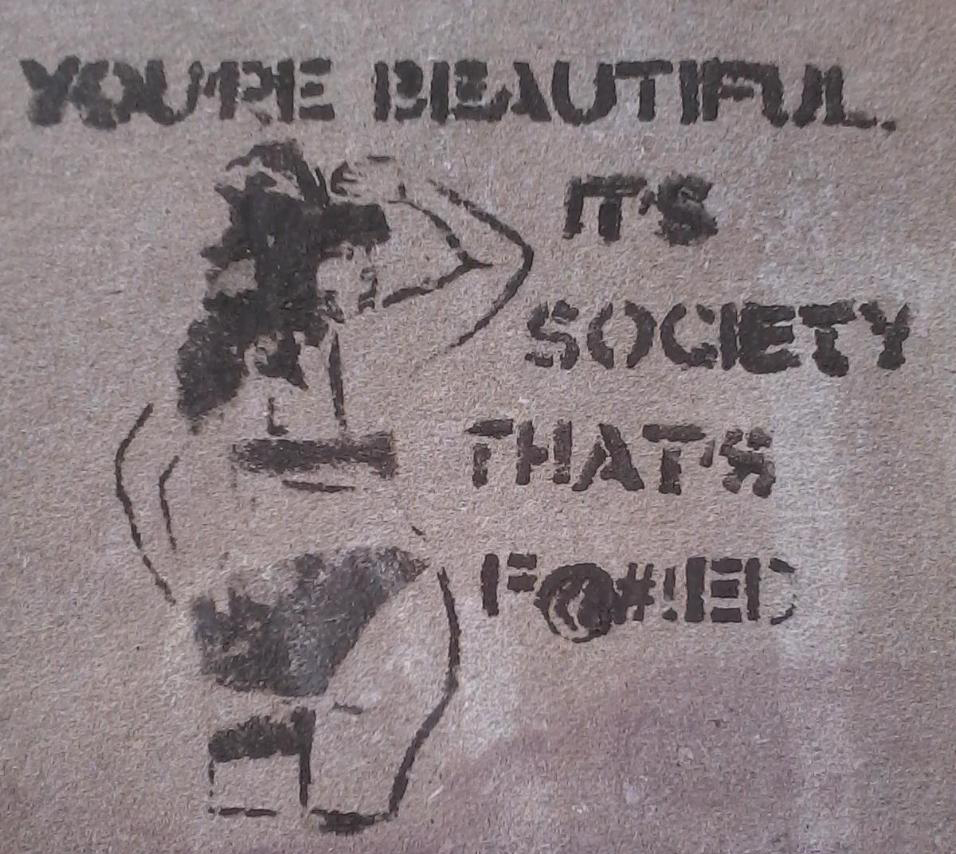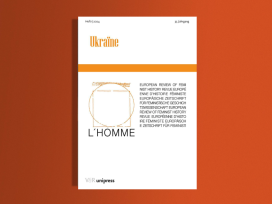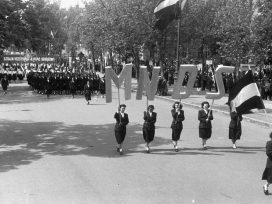Andrea Dworkin is making a comeback. Her work never really went away, of course, although radical feminism receded, and with it, an audience for work that exclusively focused on women’s lives. Dworkin died in 2005, still writing furiously but with the lively movement that had inspired her readership mired in either academic theory or celebrations of female political and corporate firsts.
Yet after many years of being disparaged and maligned, often by other feminists and queer people, #MeToo activism has opened the door to a long-overdue recognition of Dworkin’s contributions to how we understand the politics of sex and gender. And now, as we contemplate sexual harassment again (and again, and again), she is worth revisiting.
Essential words on sexual violence
Perhaps the Dworkin revival says less about Americans’ capacity to change their minds and more about the ability of powerful writing to succeed eventually. And Dworkin is a powerful writer. Her prose seizes even a hostile reader by the throat and refuses to let go.
For example, in ‘Whores’, a chapter of her 1981 book Pornography: Men Possessing Women, Dworkin introduces a material analysis of women’s oppression with this trenchant thought: ‘The metaphysics of male sexual domination is that women are whores.’ You could teach a whole seminar without exploring that idea entirely, and Dworkin drops a similarly radical observation every couple of pages.
I have always believed that part of the hostility that Dworkin aroused had something to do with a clarity of mind that terrified people who cannot bear difficult and dangerous thoughts. Dworkin’s critics often characterized her theories of sex and gender as reductive or essentialist: rarely did they engage them. On the contrary, Dworkin’s theories of sexuality were extraordinarily complex ideas distilled to their essence and articulated so clearly that anyone of any level of education could understand them.
My guess is that part of what made her such an extraordinary writer is that Andrea Dworkin did not go to graduate school. Instead, her intellect was formed by her struggle to come to terms with the most personal forms of violence: a family member’s memory of the Holocaust and her early sexual abuse by a stranger in a movie theatre. Her mind matured in the crucible of the 1960s anti-war movement, intimate partner violence and an intensive study of violent pornography.
Dworkin’s ideas about justice were crystalline and urgent. She could not be bullied out of them. And that infuriated the academics who ridiculed her ideas and marginalized her work in the seminar rooms of women and gender studies programmes.
Yet since she died in 2005, Dworkin is slowly but surely creeping back into the conversation, I suspect because the problems she wrote about have not gone away. New female intellectuals want to know why my generation has failed them. Johana Fateman and Amy Scholder reintroduced younger readers to an edited collection of Dworkin’s work, The Last Days at Hot Slit (MIT Press, 2019). More significantly, Dworkin is now respectfully cited, without the usual disclaimers, by mainstream feminist journalists like Rebecca Traister. And in 2020, Martin Duberman, a skilled chronicler of lesbian and gay life and author of seven previous biographies, gave us the first full biography of this controversial intellectual, Andrea Dworkin: The Feminist as Revolutionary (The New Press, 2020).
Biographic struggles
Duberman gives us a story that explains the urgency Dworkin brought to the struggle against sexual violence. Born to working-class parents in Camden, New Jersey, she was a bookish child who inhaled knowledge. She was raised by a chronically ill, demanding mother and a hard-working father who often worked double shifts at the post office and sometimes a second job to pay for his wife’s medical care and educate his children.
As a result, Dworkin and her brother Mark had decent public school and Hebrew School educations. But, at seventeen, Andrea left home to attend artsy Bennington College, then a women’s school, where she studied literature and music, had her first sexual relationship with a woman, and observed the predation of male faculty on female students that was normal for the time (and actually, remained normal at Bennington well into the 1980s, years after it went co-ed.)
Dworkin’s most primal struggle was, however, with her family. She wrote extensively about her parents, but in ways that minimize her struggles with them, as well as their inability to help her become who she wanted to be. For example, in the first essay of Our Blood: Prophecies and Discourses on Sexual Politics (1976), she describes Harry Dworkin as a feminist and Sylvia, who supported reproductive freedom, as ‘proud, strong and honest’, a woman whose unhappiness derived from being shoehorned into a role predetermined by patriarchy.
These things were, I suspect, true, but people can be many things simultaneously. Dworkin’s summary glosses over a lot: particularly her struggles with the hyper-critical Sylvia are documented at length in her archive at the Schlesinger Library at Harvard. Sylvia’s cruel observations about Andrea’s perceived failures occasionally provoked responses whose breathtaking bluntness betrayed deep wounds. ‘YOU MUST COME TO KNOW ME AND RESPECT ME AS I AM, NOT AS YOU ARE, NOR AS YOU WANT ME. OTHERWISE WE CAN NEVER TALK HONESTLY’, one of these letters lectured Sylvia in all caps.
Perhaps the Dworkins were nascent feminists, but the record suggests otherwise, and Duberman – mistakenly, in my view – defers to his subject on this crucial point. I do not doubt that Harry Dworkin was also a good father and encouraged his daughter’s intellectual life, but he was fully complicit in Sylvia’s abusive behaviour.
When Dworkin pushed back against her mother, Harry seems always to have sided with his wife. In 1965, Dworkin, a college sophomore, was arrested at an anti-war rally. She sued the city for a ‘physical exam’ at the Women’s House of Detention in which a doctor probed her with a speculum so harshly that she bled for days. Neither parent supported her: in fact, they were dismayed and humiliated about the publicity, even though Dworkin’s courage in bringing the lawsuit became an essential first step in closing a cesspool of a jail.
Even more unforgivably, five years later, after Dworkin married the physically abusive political activist Iwan de Bruin in Amsterdam, they failed to help her. Both parents watched as de Bruin beat their daughter mercilessly on a public street. A policeman finally intervened, but they did not.
According to Duberman, after de Bruin stalked off and they returned to her apartment, Andrea ‘couldn’t stop crying and begged her parents to take her back with them to the States. Sylvia told her that her place was with her husband.’ Incredibly, they went home without her, leaving her to endure the abuse for additional months until she could pry herself loose.
In the period after she left de Bruin and before she returned to the United States, Dworkin, initially in collaboration with a Dutch friend, Ricki Abrams, found feminism and drafted Woman Hating (E.P. Dutton, 1974). This book launched her career as a writer. The same year, she met John Stoltenberg at a political meeting. The two feminists – a gay man and a lesbian – fell in love and formed a lifelong partnership.
Most importantly, Stoltenberg supported and believed in Dworkin’s work, having already embraced feminism himself and launched his study about the centrality of sexual violence to American manhood. Indeed, in a sense, one wonders whether Stoltenberg was the man that Dworkin imagined her father to have been. Nevertheless, his love, compassion and admiration for her, his loyalty to and belief in her, was limitless and continues to this day as he works to promote her legacy.
Publishing struggles
In New York, Dworkin and Stoltenberg became part of a radical feminist movement that offered a context for Andrea’s work and complicated it by situating her in an intellectual world that could be fractious, competitive and backbiting. Frustratingly, Dworkin’s writing was less sought after by publishers than the work of movement stars like Gloria Steinem, Robin Morgan, Adrienne Rich and Susan Brownmiller – or even anti-feminists like Phyllis Schlafly.
Commercial publishers wanted books about women’s liberation but perhaps not ones that firmly equated heterosexual intercourse with violence and oppression. Many feminist outlets also disliked Dworkin’s ideas, with some publishing collectives refusing to publish her because she had been successful in the mainstream, otherwise known as the ‘male’ media. Such rejections left Dworkin ‘infuriated’ since she then was left with ‘no option other than turning to mainstream outlets’.
Dworkin’s disappointment about the publishing industry is an essential theme of her life: she viewed it as a form of censorship at her worst moments. But one problem in getting those contracts was that, although Dworkin was a popular speaker on the women’s studies circuit, her books sold poorly. When reviewed in major media outlets, they were too often sneered at.
Of course, most commercial books don’t sell well and never have. But because her writing was Andrea’s principal passion and the only thing other than speaking that she was willing to do for money, the rollercoaster ride of intense work, anticipation, and disappointment was emotionally draining. It also left her and Stoltenberg scrambling for income until he began to take regular editing jobs in the 1990s.
Yet paradoxically, even as she struggled to sell books, Dworkin became an ever-more influential voice in radical feminism. This was partly because the need for income took her on gruelling speaking tours where she connected with feminists engaged in grassroots struggle. Moreover, by the mid-1970s, the anti-rape movement and the turn to fighting violence against women in media and pornography made Dworkin a desirable presence on campuses where women’s studies programmes were blossoming, as well as at demonstrations and Take Back the Night speak-outs.
In 1977, Dworkin, Steinem, Brownmiller and Rich organized an ad in the New York Times that proclaimed the formation of a Women’s Anti-Defamation League to fight pornography and media violence, a precursor to Women Against Pornography (WAP). Pornography, recently freed from prosecution as obscenity by a series of Supreme Court decisions, was proliferating and even becoming fashionable. Although the ad affirmed First Amendment values, it argued that something else was at stake, too: pornography threatened women’s ‘physical safety and emotional well-being’.
Dworkin did not continue in WAP: she wasn’t a joiner. Even though Pornography: Men Possessing Women became an influential text for the feminist anti-pornography movement, and Dworkin personally organized the demonstrations against the infamous Barnard Conference in 1983, unpaid organizing was something for which she had neither the time, the financial resources, the temperament, nor the energy.
Speaking out
But Dworkin was a compelling and persuasive speaker. She was frequently on the debate stage, and her thinking crystallized around the idea that pornography was the primary instrument for gender subordination. After she and legal scholar Catharine MacKinnon introduced a model legislative ordinance to the Minneapolis city council that would permit anyone harmed by pornography to file a civil suit, Dworkin became well-known outside feminism, too, as feminist, politically mixed and conservative groups around the country tried to implement similar ordinances.
Dworkin traveled tirelessly to support these efforts but at a cost. Attacks on her escalated. They came from feminists and the ACLU, who protested that the model ordinance would promote censorship. They came from gay men, who viewed banning explicit materials as an attack on their sexual liberation. And, of course, they came from pornographers, who helped to fund the lawsuits that ultimately sidelined the ordinance and published ugly, demeaning cartoons of its authors.
Sadly, the anti-pornography struggle also accelerated attacks on what Dworkin cared about most, her writing. By 1988, as Duberman notes, after five books, Dworkin was ‘increasingly well-known, thanks to a trail of brutal, demeaning reviews, more as a figure of derision than esteem.’ Intercourse, a theoretical argument about the penetrative act that defined heterosexuality, was published in England that year and was for a short time on the London Sunday Times bestseller list. Then, in 1991, the ACLU – which had joined a lawsuit against the ordinance – gratuitously labelled Dworkin ‘Bigot of the year’.
Not surprisingly, as her health and reputation declined in the 1990s, Dworkin receded from view. The radical feminism of her youth had given way to a new generation of women who, often without reading her, perceived Dworkin as antithetical to the sexual freedoms they hoped to enjoy in a nation where gender equality was said to be settled. Dworkin found it more challenging to travel, and, although she continued to write, she struggled even more to find publishers willing to distribute and promote her work.
In 1999, a solo trip to Paris intended to give her a break ended in her assertion that she had been drugged and raped by a hotel staff member. Incredibly, her account of this trauma was seized upon by others to discredit her further. This required discounting what everyone who knew Dworkin or understood her work knew: she was a person of significant moral conviction who believed that living an ethical life demanded complete honesty.
Duberman’s account of Dworkin’s life will be crucial to those discovering her work for the first time. It is less useful for those looking for a book that raises or answers critical questions about her. Huge chunks of text are devoted to direct quotes from Dworkin’s letters, much less to analysis.
However, as someone who believed that her publishing difficulties and the noxious reviews of her work were an almost deliberate attempt to silence her, she would have appreciated this opportunity to speak for herself. Yet she was a lively correspondent. Views from feminists within and outside her circle – Barbara Deming, Karla Jay, Rich and Brownmiller, among others – would have helped readers understand the complexities of Dworkin’s political imagination.
Layers of protection
One theme of Dworkin’s life that has yet to be explored is the lasting effects of the beatings she endured in Amsterdam, attacks which sometimes left her unconscious after de Bruin punched her in the face and banged her head against floors and walls. Dworkin downplayed these experiences for many years, partly out of fear that her ex-husband could find her and hurt her again. Then, gradually, she began to write about them, sometimes as fiction: book by book, more details emerged over time.
But it seems reasonable to presume that this experience physically changed Dworkin. Given what we now know about CTE, we can speculate that the violence altered her brain, and her body was weakened by the furious bursts of adrenaline that accompany intense fear. The lively, adventurous teenager who left Camden to attend an artsy women’s college; the woman who sued the city of New York after being raped with a speculum and then struck out alone to live on Crete and write poetry; the woman who went to Amsterdam, again alone, as an independent journalist – that woman became depressive, fearful and able to sleep only during the day.
She grew layers of flesh that protected her from harm. As Duberman writes, Stoltenberg ‘vividly remembers that even years after they’d been living together, if he happened to enter Andrea’s bedroom while she was asleep, she sometimes awakened and yelled in terror, thinking he was Iwan (both men were blonde and tall).’ By 1999, Dworkin took up to twelve pills every day to fight chronic insomnia.
Speaking about these things should not reaffirm a stereotype concocted by Dworkin’s enemies: that she was bitter and enraged, a person unacquainted with, and insensitive to, sexual pleasure. By her own admission, she was a person who had been badly hurt. But Duberman provides plenty of evidence that Dworkin delighted in sex, even adding a description of how she and Stoltenberg made love. Duberman also notes several times that Dworkin was kind, gentle and well-liked: my research affirms this.
During her lifetime, Dworkin’s work was ‘mostly treated with cruel derision and mockery’, Duberman concludes. But ‘safely dead, the acclaim consistently denied her during her life time was showered on her grave.’ This is slightly misleading. The people who had always loved and supported Dworkin never abandoned her, and that included the thousands of women whose stories of sexual abuse she had patiently listened to for years.
Indeed, many – Brownmiller, Steinem and Robin Morgan –although more financially successful, were treated just as disparagingly by other radical feminists. They, too, were attacked in print by the corporate pornographers that those who defeated the model ordinance propped up.
But what is also true is that the stories Dworkin told – of male power reinforced by sexual violence, of the refusal to hear women’s stories, about why violence against women taught us something about all violence – did outlive her. Young feminists are returning to Dworkin’s work with fresh eyes today. We can only hope that more young feminists, men and women, return to Dworkin’s books with a sense of hope that women and men could co-exist and thrive in genuine equality.
This article was first published by Political Junkie on 15 February 2022.









